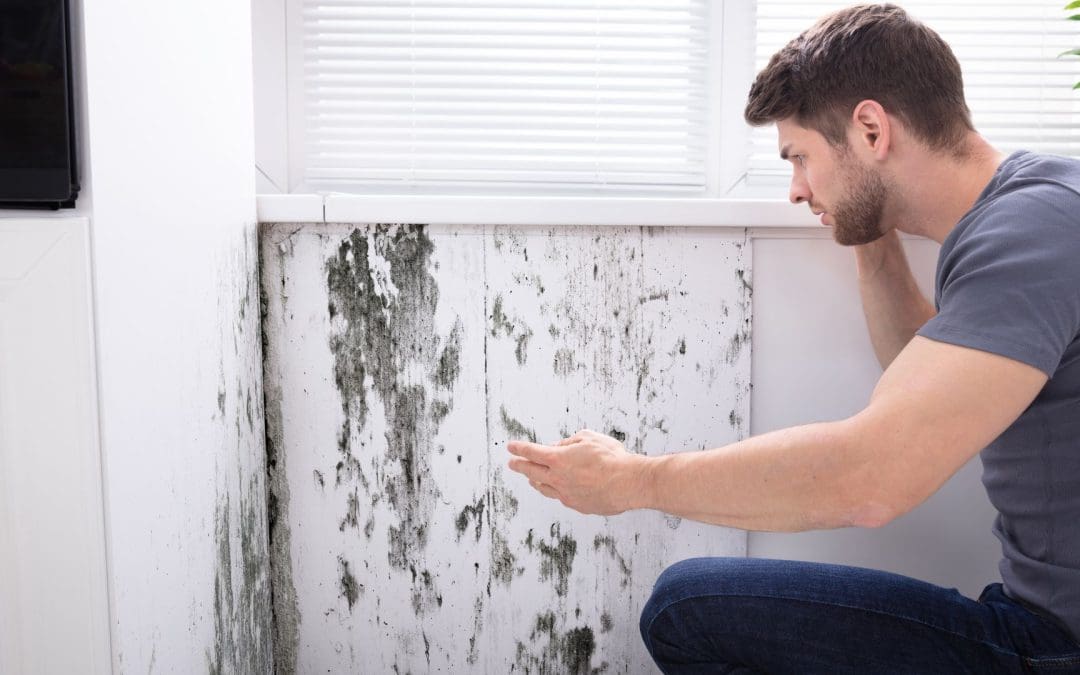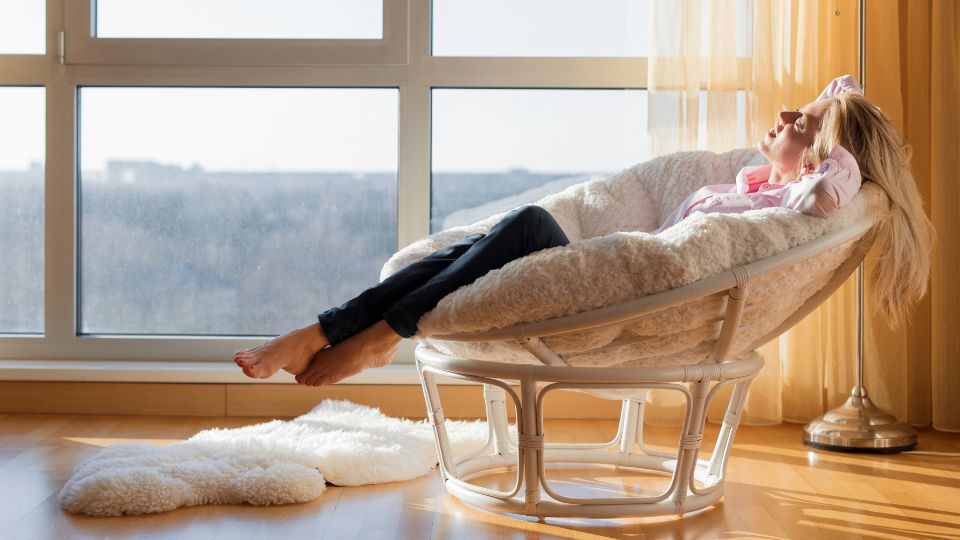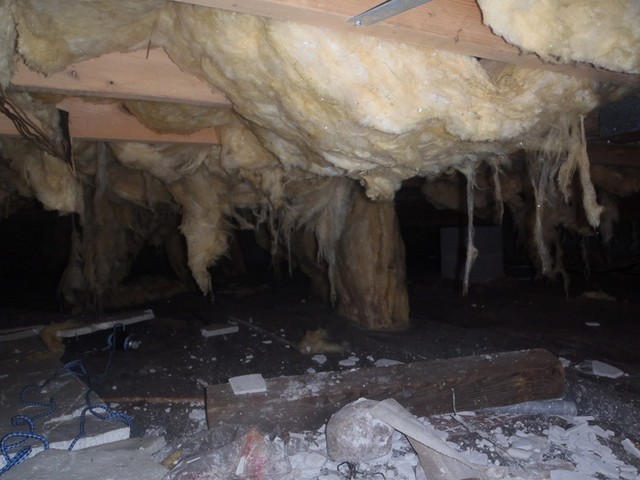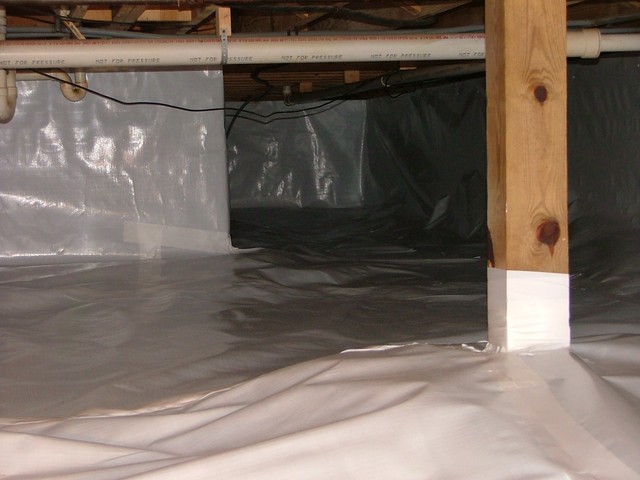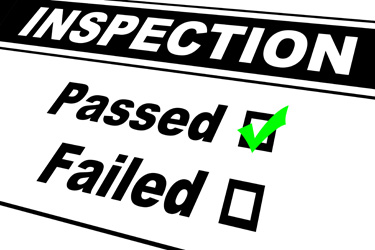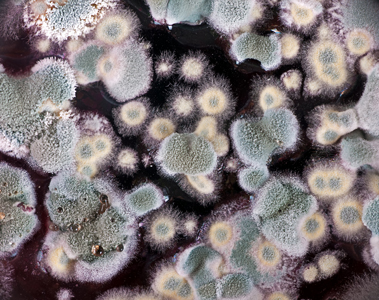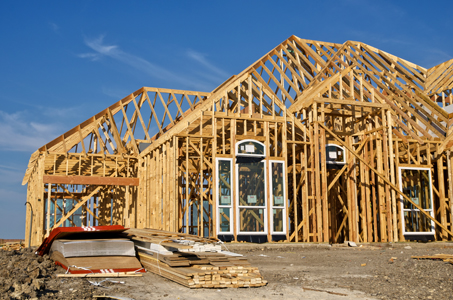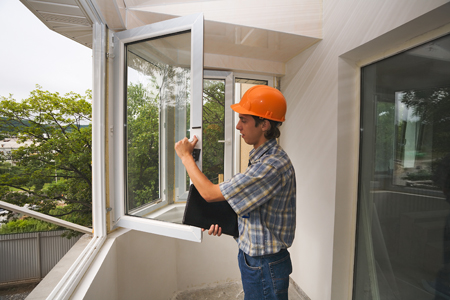
by Eric Brown | Aug 8, 2025 | Health, Indoor Air Quality, Mold Facts, Mold In The Bible
For centuries, scripture has been a source of guidance not only for faith but also for practical living. One surprising example is mold. When people wonder what does the bible say about mold, they often expect only symbolic language. Yet the Bible goes into great detail, especially in the book of Leviticus, about mold in fabrics, homes, and even spiritual cleanliness. These passages reveal how ancient communities treated mold as a real danger and offered structured ways to address it.
In this blog, we will explore mold in Leviticus, highlight important passages, and explain how these biblical insights connect to modern understanding of health and safety.
References to Mold in Leviticus

The first step in answering what does the bible say about mold is turning to the Old Testament, particularly Leviticus chapters 13 and 14. These sections outline laws of cleanliness for the Israelites, focusing on both human health and the integrity of their living spaces.
Leviticus 13:47–50 provides some of the earliest documented instructions on mold found in clothing or fabric. The text states that garments made of wool or linen that develop greenish or reddish spots must be inspected by priests. If the discoloration spread, the fabric was considered unclean and destroyed. This demonstrates how seriously mold in Leviticus was treated, not only as a matter of hygiene but as an issue tied to spiritual impurity.
Leviticus Mold and Household Contamination
The Bible also extends these laws to mold in homes. Leviticus 14:33–47 describes in detail how mold appearing on walls or stones was to be handled. If a homeowner noticed suspicious marks, they were required to report them to the priest. The priest would then quarantine the house for seven days before returning to inspect.
If the discoloration had spread, affected stones were removed and replaced. If the problem persisted, the entire house could be torn down. This level of strictness shows how mold in Leviticus was seen as both a physical threat and a sign of spiritual corruption. Such thorough measures ensured the community was not exposed to potential illness, which aligns closely with today’s understanding of mold’s impact on health.
Read more: Discover the Common Colors of Household Mold
Mold vs. Mildew: Clarifying the Terms
In modern translations, the terms “mold” and “mildew” sometimes appear interchangeably. When studying what does the bible say about mold, it’s important to recognize that the Hebrew language used words that may refer to a range of fungal growths or surface decay. Whether mold in garments, homes, or objects, the concern was the same, visible decay required immediate action.
Some translations prefer “mildew,” but the context makes it clear that these instructions were about contamination that could spread and cause harm. Whether mold or mildew, both carried weight in biblical law and required priestly oversight.
The Symbolism of Mold in Scripture
Beyond the physical threat, mold in Leviticus also carried symbolic significance. In a faith-based society, mold was more than just a nuisance; it represented impurity, corruption, and decay. The laws requiring cleansing rituals after mold removal reinforced this symbolism.
For example, once a contaminated house was repaired and cleaned, the priest would perform a purification ritual involving birds, cedarwood, and hyssop. These symbolic acts restored the house not just physically but spiritually. It demonstrates that what the bible says about mold extends beyond hygiene to reflect the broader theme of purity before God.
Lessons from Bible Verses About Mold
When reflecting on a bible verse about mold, one takeaway is the urgency of addressing it quickly. The scriptures did not suggest waiting to see if the problem would go away. Instead, they emphasized inspection, cleansing, and in some cases, destruction of contaminated materials.
This same principle applies today. Modern science confirms that mold can damage property, worsen allergies, and even cause respiratory illness. While we no longer call priests to our homes, we do rely on professional inspectors and remediation experts to assess and eliminate the problem. The underlying principle remains the same: mold must not be ignored.
Read more: 4 key Mold Inspection Actions!
Modern Science Meets Ancient Wisdom
It’s striking to compare the biblical approach with modern mold remediation practices. Thousands of years ago, the Israelites were instructed to remove contaminated stones or garments to stop the spread. Today, professionals do the same by removing porous materials like drywall, carpeting, or insulation once mold has infiltrated them.
This overlap suggests that mold in Leviticus reflects more than just religious law, it contains practical wisdom that aligns with today’s science. Asking what does the bible say about mold leads us to see that scripture acknowledged health risks long before medical research confirmed them.
Mold in Leviticus and Community Health
Another overlooked lesson is the role of mold in Leviticus in protecting community health. If a house was infected and not cleansed, the risk spread beyond one family to the wider village. This collective responsibility mirrors how public health operates today.
For example, ignoring mold in an apartment building or school can create problems for dozens of people. The biblical response to mold, swift action, inspection, and even demolition when necessary, reminds us that protecting health is a responsibility shared by the entire community.
Frequently Overlooked Interpretations
While Leviticus mold references are the most direct, other passages indirectly touch on decay and impurity. Some scholars argue that mildew and mold were viewed as visible reminders of spiritual corruption, urging believers to cleanse both their homes and their hearts.
These interpretations enrich our understanding of what does the bible say about mold. They show that while the practical concern was health, the deeper message was about living in purity and vigilance against forces that corrupt.
Why This Still Matters Today
Although mold is usually thought of as a modern household problem, its recognition in scripture proves it has always been a threat. People asking what does the bible say about mold often find reassurance that even ancient communities understood the importance of removing it quickly.
This biblical perspective also reinforces that neglecting mold can have lasting effects on health, property, and even spiritual well-being. Just as scripture encouraged immediate intervention, modern families are wise to do the same in their own homes.
Wrapping Up
From a bible verse about mold to mold in Leviticus, the scriptures make it clear: mold is destructive, impure, and dangerous if ignored. Ancient instructions emphasized cleansing, removal, and even demolition to protect communities from harm. These timeless lessons align with modern mold remediation practices, underscoring that the threat has always been serious.
For homeowners facing mold concerns today, professional help is essential. Just as the priests in Leviticus took responsibility for identifying contamination, modern remediation experts do the same with advanced tools and methods. For trusted solutions in removing mold and restoring safe living environments, Mold-B-Gone provides comprehensive services.
Whether you live in Alpharetta, Woodstock, Duluth, Flowery Branch, or surrounding areas, Mold-B-Gone offers expert remediation to keep your home safe. Contact us today to schedule an inspection and take the first step toward a cleaner, safer living environment.

by Mold-B-Gone | Jun 17, 2024 | Indoor Air Quality
Molds are a fungus that needs a damp, humid environment to propagate. They can appreciably change the indoor air quality. Therefore, it is very important to understand how mold affects air quality in order to keep a healthy living space.
How Mold Affects Air Quality
The fungus spores are launched into the atmosphere, and subsequently, people nearby might inhale them. This can lead to many allergic reactions. It causes respiratory problems, and such kinds of conditions spread throughout a person’s body. Many types of mold consist of mycotoxins. These mycotoxins cause many adverse reactions like headaches, fatigue, and irritation to the eyes, nose, and throat. This will exacerbate many conditions like asthma or other chronic lung diseases if exposed to it for a longer period.
Read more: Indoor Air Quality: Why It Matters and How to Improve It
How to Know When Mold Is Affecting Your Air Quality
Many signs will tell you that there could be mold affecting your air quality. The most obvious sign is noticing a general musty smell. Visible mold growing on walls, ceilings, or other surfaces is another overt sign. Health symptoms, like sneezing, coughing, or respiratory problems that seem to worsen when you’re indoors, could indicate you are affected by mold.
Read more: Why Should I Have An Indoor Air Quality Test?
Are Air Mold Tests Accurate?
Air mold tests are helpful in detecting the presence of mold spores in the air and their concentration. These tests concern collecting samples for air mold and then having them analyzed in a laboratory. However, results can vary greatly depending on many factors. Those factors can include when the sample was taken, which locations were sampled, and the methods used. While air mold tests provide valuable information, they shouldn’t be used alone for evaluation; this would involve a visual examination and then surface sampling.
How to Get Rid of Mold in the Air in Your Home
Do the following to effectively get rid of mold spores in the air inside your home:
- More Ventilation: Let air from your house cross-ventilate to reduce humidity and prevent mold growth.
- Air Purifiers: HEPA filters can capture mold spores, improving air quality.
- Natural Remedies: Many people use essential oils; for example, tea tree oil has antifungal properties that kill mold spores in the air naturally.
- Dehumidifiers: Maintain indoor humidity below 50 percent to prevent mold growth.
- Regular Cleaning: Clean and disinfect places where mold usually grows, like in bathrooms and kitchens. Use a solution that kills mold.
When to Get Professional Help
If mold remediation becomes a significant concern, it’s essential to consider professional services such as indoor air quality testing in Atlanta. Mold-B-Gone Remediation offers exceptional mold cleaning services in Atlanta to ensure your home remains mold-free and safe. We also specialize in crawl space encapsulation, mold remediation, water damage restoration, and other related services. Contact us today to ensure a healthier, safer living environment for you and your family!
We also proudly serve Johns Creek, Lawrenceville, Marietta, and surrounding areas, offering comprehensive mold remediation services wherever you need them.

by Mold-B-Gone | Apr 23, 2024 | Indoor Air Quality
When pondering what mold smells like in a home, most people describe the odor as musty. Some liken it to an earthy or meaty scent, similar to wet socks or rotting wood. This distinct aroma is not solely from the mold itself but from microbial volatile organic compounds (MVOCs) released during various stages of its growth. These odors are typically unpleasant and pungent, alerting homeowners to potential mold issues hidden within their living spaces.
Tracing Mold’s Entry into Homes
Mold spores are ubiquitous in the environment and can enter homes through open doors, windows, vents, and HVAC systems. They can also hitch a ride indoors on clothing, shoes, and pets. Once inside, mold needs moisture to start growing.
Common sources of indoor moisture that may lead to mold include leaks in roofs, windows, or pipes, as well as areas with flooding. Homes with poor ventilation, especially in places like bathrooms, laundry rooms, and kitchens, are also at higher risk for mold development.
Common Molds in Residential Spaces
In residential settings, various types of mold can be found, each with unique characteristics and potential impacts on health. Some common indoor molds include Cladosporium, Penicillium, Aspergillus, and Stachybotrys, often referred to as black mold.
Read more: What Is Black Mold?
Cladosporium typically appears on fabrics and wood surfaces, while Penicillium might proliferate on wallpaper, fabrics, and insulation. Aspergillus is often found in house dust. Stachybotrys is notorious for growing on damp surfaces like drywall with high cellulose content.
Mold and Its Health Implications
The smell of mold can be more than just a nuisance—it indicates the presence of mold, which poses various health risks, particularly to individuals with pre-existing conditions such as allergies, respiratory issues, or compromised immune systems. Exposure to mold and its smell can lead to symptoms like nasal stuffiness, eye irritation, or skin rashes. More severe reactions include asthma attacks or more serious respiratory complaints. Particularly vulnerable are those who are mold-sensitized, as they might experience more acute symptoms upon exposure.
Ensuring a Healthy, Mold-Free Environment
Maintaining a mold-free home is crucial for ensuring the health and well-being of all residents. Regular inspections and prompt attention to any signs of moisture can prevent mold from taking hold. If you smell mold in the walls or the basement,it’s essential to address these issues swiftly.
For comprehensive mold remediation services in Atlanta, reach out to Mold-B-Gone Remediation. We specialize in mold remediation, offering tailored solutions for mold-sensitive individuals. Let us help you restore your home to a safe and healthy environment. Contact us today for mold cleaning services in Atlanta.

by Mold-B-Gone | Jan 3, 2023 | Indoor Air Quality
Did you know that the air inside your home can be more polluted than the outside? It’s true! Many people spend most of their time indoors, so it’s essential to make sure that the air quality is good. Indoor air quality testing involves inspecting and measuring the number of contaminants in your indoor air to ensure it is safe.
Read more: What Is Indoor Air Quality Testing?
The most common pollutants in indoor air are dust mites, pet dander, pollen, mold spores, bacteria, volatile organic compounds (VOCs), and other particulates. Read on to understand why indoor air quality matters and how to improve it.
Reasons To Maintain Indoor Air Quality
Maintaining clean indoor air quality is essential for all buildings, from residential homes to commercial businesses. Here are some key reasons why the air quality inside your home, office, or other building should be a priority.
1. Improve Health
The most important reason to maintain good indoor air quality is for the health of occupants. Poor air quality can cause various issues, from respiratory problems to tiredness and headaches. You can help prevent these issues by maintaining consistently good air quality.
2. Increase Comfort
The comfort of occupants is also essential. Poor indoor air quality can lead to stuffy and uncomfortable environments, affecting productivity and overall satisfaction with the space. Ensuring good air movement within a building will improve the comfort levels of any occupants.
3. Reduce Pollution
Poor air quality can also impact those outside of the building. Poor ventilation within a building can cause pollutants to become trapped, leading to potential health risks for those in the surrounding area. Regular indoor air quality maintenance is essential for reducing pollution and protecting the environment.
4. Lower Risk of Fire
Finally, good air quality can also reduce the risk of fire. Poor air quality can cause an accumulation of combustible particles or gases, increasing the chances of a fire occurring in the building. Good airflow and ventilation will help to prevent this from happening.
Tips To Improve Indoor Air Quality
Indoor air quality is essential for the health and well-being of those inhabiting a particular space, so it’s essential to improve it. Here are tips on how to do this:
1) Improve Ventilation
Ventilation is one of the most important things you can do to improve indoor air quality. Installing ventilation systems, like mechanical or natural ventilation, helps bring fresh outdoor air into your building or home. This helps reduce levels of pollutants and moisture, which can cause health problems. Additionally, ensure all windows and doors are properly sealed to ensure no outside pollutants are getting in.
2) Use Air Filters
Air filters are designed to remove pollutants from the air and help improve indoor air quality. Invest in high-quality filters designed for your HVAC system, and replace them regularly. Additionally, consider using air purifiers or ionizers to capture additional pollutants and improve air quality.
3) Better Insulation
Proper insulation helps reduce air leakage in your home or building, which can help prevent pollutants from entering. Ensure that the walls, ceilings, and floors of your building are adequately insulated to keep the air clean.
It is essential to improve indoor air quality to benefit those living or working in any given space. Call Mold-B-Gone for the best indoor air quality testing and mold inspection in Atlanta. With the help of our knowledgeable staff, you will be sure to have a healthier home environment in no time!

by Eric Brown | Apr 11, 2019 | black mold removal Atlanta, black mold removal Georgia, Crawl Space Vapor Barrier, Crawlspace Mold, Health, Homeowner Tips, Indoor Air Quality, Mold Information, Mold Inspection, Mold Remediation, Mold Removal, Mold Removal Alpharetta GA, Mold Removal Atlanta GA
Got Mold In Your Crawlspace?
Here Are The Top 3 Reasons Mold Grows!
Crawlspaces are the ideal environment for mold to thrive.
Most crawlspaces are dark, dirty, and humid. Bugs like to live in there. They’re vented to the outside air in the summer (and in the winter if you neglect to close your vents) which can be very humid and this defeats the purpose of venting.
Mold is a fungus that requires moisture and high humidity to grow and thrive.
Like plants, mold has cells. However, unlike a plant that has chlorophyll and able to makes it’s food through photosynthesis, mold can not feed without moisture.
Mold reproduces by releasing it’s spores, this is mold’s survival mechanism.
In addition to moisture, mold also requires the right temperature of 41 degrees fahrenheit up to 100 degrees fahrenheit, common in Atlanta, Georgia and the South.
The final ingredient mold needs to thrive is food: high cellulose materials such as paper and wood, drywall, wallpaper, carpet, ceiling tiles, dust, and dirt.
If you want to know more about mold, then read: 10 Facts About Mold.
Now that you understand why mold grows in your crawlspace, the remainder of this article will list and explain the top three reasons why you have moisture in your crawlspace and what you can do to fix the humidity issues.
How To Measure The Relative Humidity Of Your Crawlspace!
The easiest way to determine the relative humidity of your crawlspace is to use a hygrometer or you could install a digital thermo-hygrometer with a remote sensor to track it.
If the relative humidity is greater than 50% this could cause moisture issues that leads to mold.
Mold will begin to grow at 50%, and will thrive when the humidity is greater than 70%.
The key to ensuring that your crawlspace does not become a source of mold is to figure out how to control the humidity.
Listed below are the top three reasons your crawlspace has high humidity.
#1 Water Accumulation!
If your crawlspace has standing water, you probably have a drainage problem or a plumbing leak. This needs to be fixed immediately.
You do not want water to accumulate in your crawlspace because this will compound your potential mold problems, not to mention as mold grows it will impact the indoor air quality of your home and health.
#2 Moisture Evaporating From The Ground!
When homes are built with crawl spaces, most builders neglect to cover the ground, meaning that the crawlspace is covered with dirt.
Dirt has moisture and as the moisture evaporates, it will increase the humidity in your crawlspace.
Unfortunately, this is a common problem in Atlanta, Georgia, and other southern states. To prevent moisture from evaporating from the ground, the easiest solution is to cover it up with a vapor barrier during crawlspace encapsulation.
#3 Outdoor Air Coming In Through The Crawlspace Vents!
The third reason your crawlspace could have moisture issues is through the vents.
When you bring outdoor air into the crawlspace, the relative humidity can increase.
Cool air cannot hold as much moisture as warm air, so the air that enters is now closer to its saturation point, referred to as the dew point.
It might be 60% relative humidity outside, relative to a temperature of 90 degrees fahrenheit, but when that air enters the crawlspace and cools down to 75 degrees fahrenheit, the relative humidity jumps up to 95%.
In the past, we were told that crawlspaces needed to be ventilated. Now, however, we are learning that crawlspaces need to be treated almost as if they were living spaces.
Fixing Your Crawlspace Humidity and Mold Problems
If your crawlspace is vented and the relative humidity is high, you need to fix the problems. It is not as simple as installing a dehumidifier either.
If you have water accumulation, the source of the water must be addressed. If it is a plumbing issue, fix the leak. If the problem is caused by drainage, this must be fixed as well.
If the problem relates to moisture evaporating from the ground or outdoor air coming into your vents, this can be fixed with crawlspace encapsulation in Atlanta, GA.
Mold-B-Gone Remediation, LLC specializes in drying out damp crawlspaces and turning them into dry, healthy foundations for your home.
Our dry-space crawlspace system includes the following:
- Thorough cleaning of the crawlspace, including mold removal and prevention.
- Installation of a wall-to-wall guide, durable, 14 mil vapor barrier.
- Attachment of the vapor barrier over ground and up sidewalls to 6 inches below floor joists.
“The end result is an energy-efficient, healthy home.
To know more about crawlspace, read our blogs: Is Your Crawl Space Contaminating Your Indoor Air?, Why Do Crawl Spaces Need A Vapor Barrier?
Got Crawlspace Mold Questions?

Got Crawlspace Mold Questions?
If you are concerned about humidity in your crawlspace and/or mold issues, call 470-545-4467 or send us an e-mail. We look forward to serving you! 🙂

by Eric Brown | Mar 14, 2019 | Beware Of Mold When Buying A Home, black mold removal Atlanta, black mold removal Georgia, Health, Homeowner Tips, Indoor Air Quality, Mold Facts, Mold Information, Mold Inspection, Mold Remediation, Mold Removal, Mold Removal Alpharetta GA, Mold Removal Atlanta GA
Are You Buying or Selling A Moldy Home?

Are You Buying or Selling A Moldy Home?
It’s that time of year when the real estate market begins heating up in Atlanta, Georgia. More houses on the market to fill the need of anxious home buyers.
Many homes built since the 1970s are showing signs of mold growth because of the oil crisis that occurred. This event encouraged home builders to make the homes more air-tight, meaning there were less drafts that brought outdoor air into the home.
This trend to energy efficiency has led to mold problems because mold needs water and moisture to thrive and the air-tight environments trap moisture in.
The upside is energy efficiency has saved you costs on utilities.
The downside, indoor air quality has suffered because of mold growth! This has led to higher incidences of mold related illness and reduced home values because mold literally feeds on the home, impacting its structural integrity.
The major problem with mold is that it can be hidden. You could have mold in your home and not even know that you have it. Sometimes the only clue that you have mold is family members may be getting sick more often. The problem with hidden mold is the mold spores are not visible and because of modern day HVAC systems, the air borne spores will continue to be circulated in your home, thereby spreading the spores in every room of your home.
As a home seller or home buyer, you need to be aware of the potential concerns caused by mold. Consult with your Real Estate Agent and ask them to call Mold B Gone, 470-545-4467; for a limited time we are offering mold inspections.
If you are selling your home and know that you have mold, had past water leaks that have been fixed and/or experienced a major water event like a flood or sewage backup, you should disclose this information to the realtor listing your home to avoid potential litigation.
In a perfect world, the home seller will disclose this information, but let’s face it, we are not living in a perfect world.
When a home seller wants to sell their home, their objective is to list the property and get the highest price for their home. This is the reason they get the help of a realtor.
The only way home buyers can protect themselves is to take matters into their own hands and make sure that the home they are buying does not have mold or moisture concerns that could lead to mold.
Most home buyers rely on the expertise of their home inspector, but as this article explains, can you really just rely on the opinion of your home inspector? Are they experts in mold? Most home inspectors are not and they rely on the goodwill of referrals from realtors, so there could be an inherent conflict of interest.
This article explains why you should submit an offer to purchase, subject to a home inspection AND a mold inspection. It also reveals the top 3 reasons to have a mold inspection before buying a home.
What Is Mold?

What Is Mold?
A fungus, some molds are visible, in various colors–black, white, green, gray–and will likely give off a smell.
Mold is nature’s recycler. It is everywhere because it has an important purpose in our eco-system: to breakdown and eat dead organic matter.
Mold needs three important ingredients to grow.
First, a food source, dead organic material like wood, paper, carpet, etc.
Second, the ideal temperature of 41 degrees fahrenheit up to 100 degrees fahrenheit.
Third, and most importantly, moisture. Without moisture, mold will not grow.
Why Is Mold A Problem?
Aside from the structural and health concerns (asthma and chronic sinusitis for example) that mold poses, the other major concern is that mold is often out of sight and difficult to see.
Common reasons and areas of the home that mold can be found include:
- Around leaking pipes, windows, or roofs. Water provides mold spores the moisture they need to grow.
- Basements or other areas of the home that have flooded and were not dried properly.
- Common with new construction is the practice of tightly sealing the building, which can trap moisture leading to mold growth.
- Poorly ventilated homes that does not enable outside air to circulate in the home.
Some other clues that there could be mold in the home include the following:
- Water stains on the walls and ceilings.
- Musty odors in areas of the home like the bathroom, kitchen, laundry room, and basement, where leaky pipes are commonly found.
- Standing water in the basement.
Be particularly careful if you are looking at purchasing a foreclosed home. These homes are susceptible to mold growth because cost saving measures by the banks usually means they will shut down the HVAC system, which is a major concern because it results in high humidity levels and ultimately mold growth.
Recently renovated homes are another concern because improperly trained contractors or the home seller could have found mold, but not addressed it properly.
A Brand New Home Could Have Mold!

A Brand New Home Could Have Mold!
If you are buying a new home, you may think that mold will not be an issue either. New does not necessarily mean mold for several reasons:
- The trend towards building energy efficient homes may save money on heating and cooling. The negative, however, is that by building homes so that they are air tight could result in a lack of proper ventilation, leading to mold growth.
- Simple construction errors like installing the vapor barrier when there is moisture present. This error will lead to mold growth because the moisture is trapped.
- The time of year the home was built could also be a factor. If the home was built when there was lots of rain and the foundation was not allowed to completely dry before installing the insulation and vapor barrier, then moisture could be trapped behind the walls.
- Cost saving construction measures is another factor. Home builders are using more Orient Strand Board (OSB) and less plywood and timber which provided some resistance to mold because these materials are semi-porous. In contrast, OSB and particle board are porous and susceptible to mold growth.
Top 3 Reasons To Have a Mold Inspection Before Buying a Home
Aside from the peace of mind that mold inspection offers, here are the top three reasons why you should consider a mold inspection when you buy a home:
- Mold Remediation Can Be Costly!
- Real Estate Agents Are Not Mold Experts!
- Home Inspectors Are Not Mold Experts!
#1 Mold Remediation Can Be Costly!

#1 Mold Remediation Can Be Costly!
As stated in an earlier article, the cost of mold remediation will depend on three key factors:
1. How much of the area is infected with mold?
2. What kind of materials are infected?
3. How easy is it to access the mold?
On average, the typical household mold removal project will range from $2,000 to $6,000, but can be as high as $30,000 or more depending on the extent of contamination.
Considering the potential cost of mold removal, you are much better off finding out if there is a potential mold problem before purchasing the home. A mold inspection will provide you with the data you require to make an informed decision.
Best case scenario, no mold is found. Worst case scenario, mold is found, but then if you still have your heart set on the home, at least you now have some negotiating power to bring down the price so the home can be properly remediated before you move in.
#2 Real Estate Agents Are Not Mold Experts!

#2 Real Estate Agents Are Not Mold Experts!
The goal of every real estate professional is to list and sell homes. They will only make their commission when the property sells, so they have significant motivation to do what it takes to facilitate the sale. Their end goal is pretty defined: sell the home and collect the commission.
In addition, real estate agents are sales and marketing professionals, they are not construction experts and likely know very little about mold, where it could be found, and why it is a problem.
When listing a home, the agent is relying on the honesty and integrity of the seller who fills in a property disclosure form. If the seller fails to disclose a mold problem that has not been fixed and is trying to hide the mold problem by painting over it or trying to hide it, how is the agent going to know. How will you know?
Buyers should pay close attention to the property disclosure form because it could provide you with clues of potential moisture problems that could cause mold. Some clues include YES answers to these types of questions:
- Is the property in a flood hazard area or an inland wetlands area?
- Does the home have basement water, seepage, or dampness issues?
- Has the home had roof leaks?
- Does the home have any rot and water damage problems?
- Does the home have any water drainage problems?
- Does the home have any sump pump problems?
#3 Home Inspectors Are Not Mold Experts!

#3 Home Inspectors Are Not Mold Experts!
Mold sickness is considered a hidden epidemic for two key reasons. First, most physicians are not trained to identify or treat mold illness. Second, most homes have mold, but the owners do not realize they have mold because it is hidden.
Since some people get sick from mold and other’s do not, a family could have been living in a moldy home and never experienced any major health concerns. In short, a seller of a home could have mold and not know because mold can be hidden underneath carpet, a new paint job, baseboards, behind walls, above ceiling, etc.
Taking this into consideration, when you hire a home inspector, their primary concern is not to identify if the home has mold. Rather, they are inspecting the overall structural integrity of the home, the roof, wiring, bathrooms, plumbing, etc.
A home inspector may point out water stains or moisture concerns in areas of the home, advise you that your basement has an odor, identify water seepage or a leaky roof, but they will not tell you if you have mold, what type of mold you have, and how extensive the mold problem is.
As a final note, like many business owners, home inspectors rely on referrals. Not surprisingly, one of the biggest sources of referrals tends to be real estate agents, whose primary objective is to sell property. Mold concerns present challenges to home sellers and their agents. Could there be a potential conflict of interest?
Mold Inspections Are Important!
The process of buying a home is an exciting process. You have big plans for your new home! You are looking forward to the future in your dream home to raise your family.
But in all the excitement, many home buyers forget about the future problems that mold and past moisture issues could have caused. This fact is ignored because many home buyers think a home inspection is a enough to protect them from future and costly repair problems. This is the #1 mistake home buyers make; home inspectors are not mold experts!
The worst case scenario is you move your family and all your possessions into your new home and eventually discover mold. Now what? You can ignore the problem which could cause future health and structural concerns for your property or you make the financial decision to deal with your mold problem.
Both options can be costly. Ignoring the problem will reduce your property value as the mold eats away at your home, not to mention the potential health issues. Addressing the mold concern can also be costly because proper remediation needs to be done by professionals.
Likely, the last concern you have when you are purchasing a home is the potential problems that mold could cause. Once you find your dream home, you want to submit your offer and close the deal.
However, I caution against being too hasty. In addition to hiring a reputable home inspector, seriously consider the services of a mold inspector.
Mold inspectors are trained to not only identify the moisture issue causing the mold but will also provide you with information on what type of mold is growing in your home and how extensive the problem is.
As mentioned earlier, the best case scenario is that no mold is found in your home.
However, if the mold inspector does find a mold problem it is better to be aware of the problem so that you can adjust your offer, subject to mold removal by the seller along with proper clearance letters. If the seller does not want to cover the cost of the removal, then at least you can factor in the cost of the mold removal into the purchase price.
Bottom line, it is better to be safe and informed, then sorry. The relative cost of a mold inspection is minor compared to the overall investment into the home and the potential costly headaches you will face if you have to pay for mold removal in the future.
As mentioned earlier in this article, consult with your Real Estate Agent and ask them to call Mold B Gone, 470-545-4467; for a limited time we are offering mold inspections.
Got Mold Questions?
We are mold inspection, detection, and removal experts. Call us, 470-545-4467, or contact us via e-mail. We look forward to serving you! 🙂



